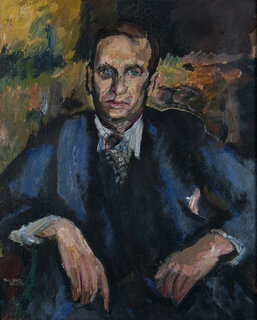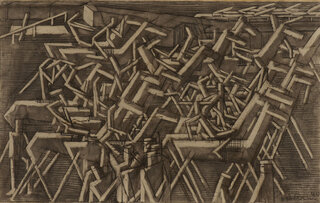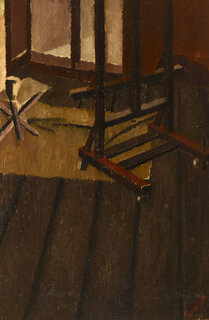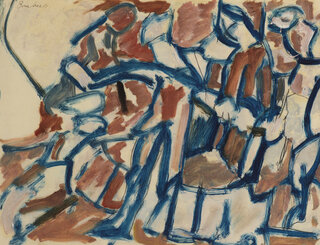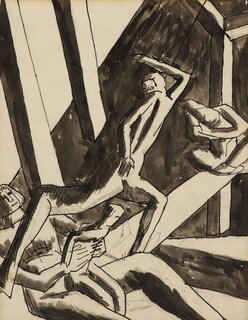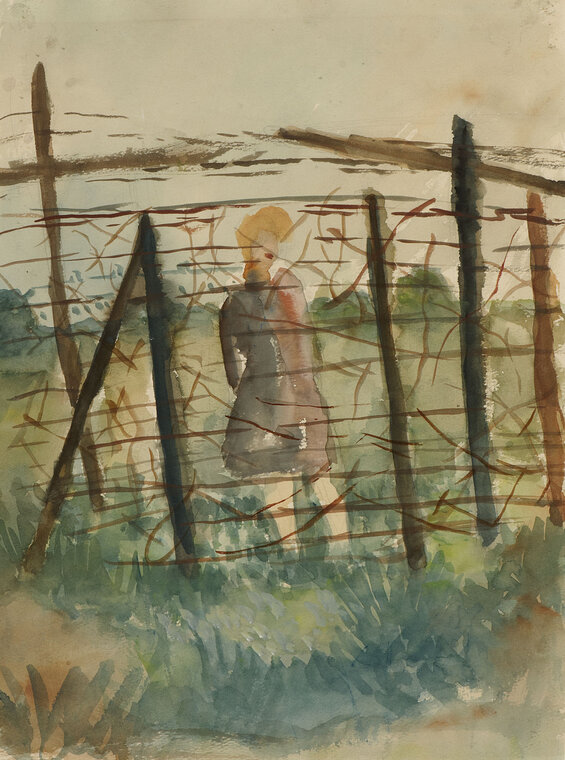
© Alfred Lomnitz estate
At the outbreak of war, former German and Austrian citizens resident in Britain were declared ‘enemy aliens’. After an initially cautious approach, the fear of invasion and resulting media agitation led to the internment of the majority of male and a number of female ‘aliens’ during the early summer of 1940. Mainland transit camps were set up, from which internees were transferred to more permanent camps across Britain and the Commonwealth. Huyton, a recently completed housing estate outside Liverpool, temporarily housed artists including Alfred Lomnitz (‘Lom’), Martin Bloch, Walter Nessler and Samson Schames.
Lom had worked as a painter and commercial artist prior to leaving Germany in 1933 and continued this dual career in England. Within a year of his release an autobiographical account of his internment was published by Macmillan in 1941, ‘the first account of life in an English internment camp for aliens’, with a striking cover design of a figure silhouetted against coils of barbed wire. The tone of the synopsis and the title itself, Never Mind, Mr Lom (apparently the cheery parting given by Lom’s charlady as he was escorted from home by two detectives, leaving behind his mother and schoolboy son), suggests a very British attitude to internment, a condition to be borne stoically and to be turned to its best advantage. Indeed, Lom described Huyton as a place where ‘[…] every corner of the camp is a potential picture’. Furthemore, ‘the quietness of life and absence of any external distraction gave a splendid opportunity for more concentrated work than would have been possible in the normal way of life.’ Given a room to paint in by the Company Captain, Lom describes making a collapsible easel from salvaged wooden posts and door hinges, using a piece of slate as palette and, at least initially, working with watercolours and cartridge paper brought from home. When the paper ran out he used newspapers to paint on, describing the satisfying effect of applying watercolour over type and images.
